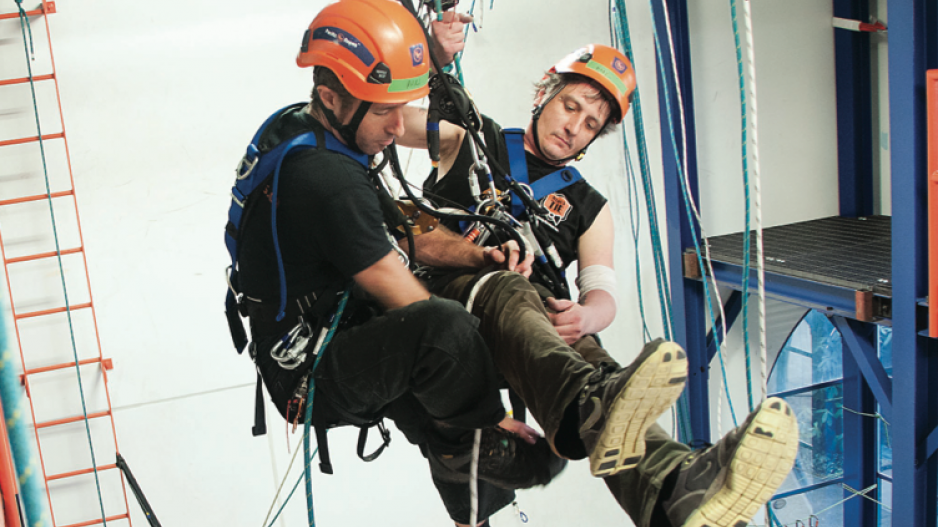It’s a line of business not for the faint of heart: painters, window washers and maintenance workers who do their jobs suspended hundreds of feet in the air, dangling off bridges or highrise buildings.
Now some Vancouver companies are heralding new regulations being introduced by WorkSafeBC in February, which they say will improve worker safety.
But they’re also calling for more action on a method of suspension – bosun’s chair, often used by window washers – they say is archaic and unsafe.
“Window cleaning sort of has a history of being a cowboy occupation,” said Vadim Pokotilo, owner of Pacific Sky Services, who recalled nearly falling out of his bosun’s chair as a newbie window washer.
Like several other Lower Mainland window washing companies, Pokotilo has moved to a system called rope access. Already common in Europe and the United Kingdom, rope access is growing in popularity in North America, say its adherents.
A demonstration of rope access techniques. Video courtesy Canadian Rope Access Specialists.
The method, which incorporates a two-line system, a harness and special training, can be used not just for highrise maintenance but also for engineering, inspection and maintenance work on bridges, hydro dams and oil and gas facilities. Companies that use it say it’s safer because training is standardized and rescue methods and planning are emphasized.
“It’s a lot faster, it’s more efficient and there’s the safety aspect,” said Tim Zagiel, general manager of Pacific Ropes Contracting in Richmond. “We’ve seen big growth over the past eight years we’ve been in business.”
He added that rope access companies based in the United Kingdom or the United States are now looking at Western Canada as a growth opportunity. The system is safer than using scaffolding, a crane with a basket or other methods for working in high places, Zagiel said.
The new WorkSafeBC regulations require rope access workers to be certified in one of two internationally recognized certification standards.
It’s a good first step, said Greg Korpela, general manager for Canadian Rope Access Specialists, but his company is actively lobbying WorkSafeBC to take a hard look at bosun’s chair.
“Anybody that is using a traditional classic bosun’s chair system, they can continue to do what they’re doing,” Korpela said, adding that current regulations do not specify whether a specific standard of training is required before workers can use a bosun’s chair.
“The bosun’s chair system is entirely unsafe and, in our opinion, unjustifiably so, and should not be allowed.”
Pacific Ropes and Canadian Rope Access Specialists consulted with WorkSafeBC before the new regulations were drafted. Both companies also offer rope access training.
Andre Genesse, owner of Skywalker High-Rise Services, said several of his workers have been trained on rope access. But he plans to continue to use the bosun’s chair because rope access is very expensive for window washing.
While a bosun’s chair platform costs about $125, a rope access harness costs around $1,600 and the per-person training is around $2,000.
“In 12 years that I’ve used it I’ve never had one [accident], not even a close call,” Genesse said. “There’s nothing unsafe about the bosun’s chair.”
In an email, WorkSafeBC said the bosun’s chair method is legal and that workers must wear a “personal fall protection system.”
Regulations also require new workers to be trained and for extra training to be provided if workers request it.
Pokotilo said for his company, rope access has been worth it.
“If everyone started demanding rope access, it would mean that [anyone] working on ropes in any capacity would have to have that certification, which to me makes sense.”
@jenstden




